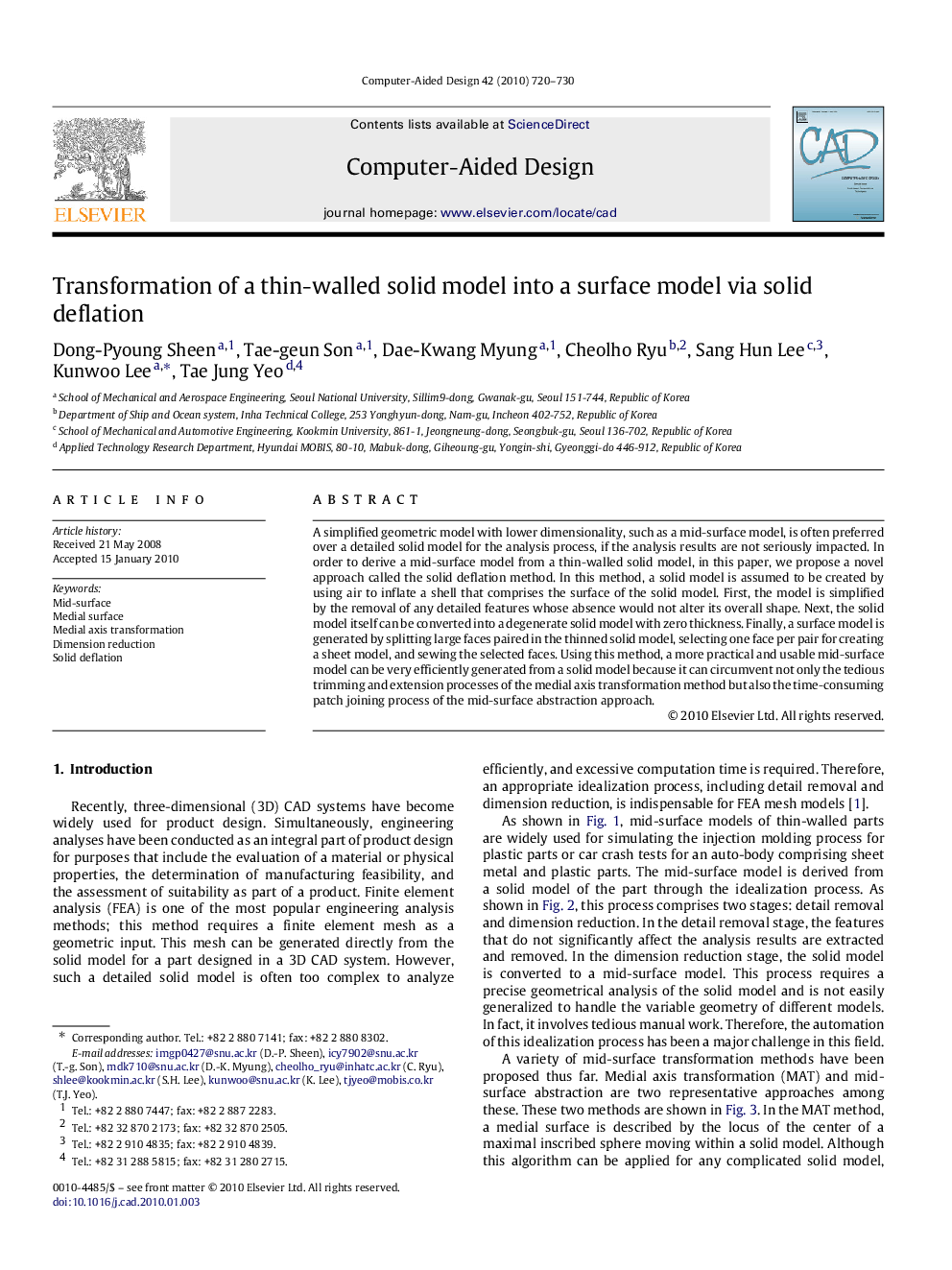| Article ID | Journal | Published Year | Pages | File Type |
|---|---|---|---|---|
| 439618 | Computer-Aided Design | 2010 | 11 Pages |
A simplified geometric model with lower dimensionality, such as a mid-surface model, is often preferred over a detailed solid model for the analysis process, if the analysis results are not seriously impacted. In order to derive a mid-surface model from a thin-walled solid model, in this paper, we propose a novel approach called the solid deflation method. In this method, a solid model is assumed to be created by using air to inflate a shell that comprises the surface of the solid model. First, the model is simplified by the removal of any detailed features whose absence would not alter its overall shape. Next, the solid model itself can be converted into a degenerate solid model with zero thickness. Finally, a surface model is generated by splitting large faces paired in the thinned solid model, selecting one face per pair for creating a sheet model, and sewing the selected faces. Using this method, a more practical and usable mid-surface model can be very efficiently generated from a solid model because it can circumvent not only the tedious trimming and extension processes of the medial axis transformation method but also the time-consuming patch joining process of the mid-surface abstraction approach.
